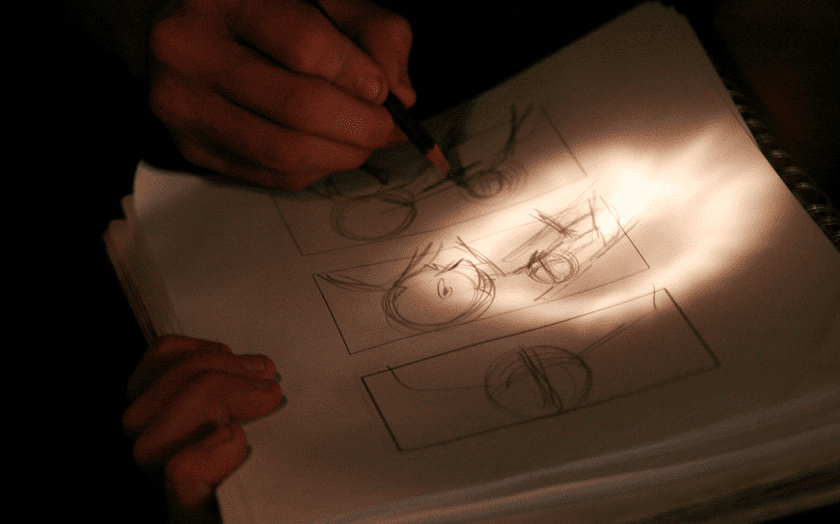I always marvel at how many different approaches filmmakers take to pre-production. Some can’t live without storyboards, some can’t work with them, and recently social media has come into play.
Here is the process I take once I have a written script and have finished casting.
1. Create a Pinterest page.
I use this to collect imagery on the web that relates to lighting set-ups, locations, wardrobe, and any other production design and art elements.
2. Create a FB group.
I use this for the cast & crew. It’s an easy way to keep everyone updated, and contact the masses non-obtrusively. I find it great for igniting relationships between unknown cast members before production even starts.
3. Set a schedule for rehearsals.
Every important scene needs to be blocked and rehearsed prior to shooting. I like to schedule some time with the main cast to work this through, and get to know how each other operates if we have not worked together previously.
4. Secure Locations
If you have not done so already, securing the location is key to getting accurate storyboards, and making sure things go smoothing for the DP and crew. Depending on accessibility, I like to photograph, and even videotape the locations to get everyone on the team ample information to work with.
5. Create a shooting script/shot list & storyboard out key elements
Once you have blocked out scenes and have some locations to work with, now is a good time to create a shooting script and storyboard key elements. Since art is my weakness, I have adopted other methods of ‘storyboarding’. Depending on accessibility again, I like to ‘shoot’ the scenes as rough as possible to get a feel for different shots and potential challenges. While drawing your idea is a fantastic way to contribute your vision, when you are working with live locations and limited budgets, I find video to be more useful.
6. Plan test shoots if necessary.
Again, if possible, test shooting on the location to ‘storyboard’, block, and work through all potential options. One of the things I hate to do on set is have to make decisions by guessing what is best. By setting up a test shoot/final rehearsal for the important scenes, you and your entire cast & crew will enter the production fully prepared. This makes for smooth sailing, or as smooth as the film gods allow.
7. Set a shooting schedule.
Once we have a plan, the next step is to organize it. I do this by location first, and then cast. The goal is to obviously be as efficient as possible so no one from the cast or crew is waiting around all day. Just half the day is appropriate, wouldn’t you agree? Either way, proper scheduling and preparation allows for everyone to concentrate on the tasks at hand, rather then how best to accomplish them.
8. Find/book Crew & Equipment.
I like to handle this as close to the end of the process as possible. Most people have a team they prefer to work with. Whether or not that is the case, you should obviously try to get the best possible crew and equipment there is. However, once the crew is determined, you may want to delay on finalizing the equipment until the shot list is complete and the test shooting is done. You never know when a specific lens, flag, or light will be needed for a shot. My process is to secure the DP, and then work with them through the process to get to this point, where we collectively pick the right people and equipment for the job.
9. Find Photographer / Videographer.
This is probably one of the most underrated decisions made today. I can’t emphasize enough how important it is to have stills of scenes in action and behind the scenes, as well as video testimonials and footage of behind the scenes. This is ESSENTIAL for marketing any film today. You need scene stills to create posters (designers prefer to work with a RAW photo image then a video clip), and you need behind the scenes footage to promote the film, and document the extraordinary journey to create it. Find a good photographer and videographer that is passionate enough about their craft to not require constant direction on set. Let them snap/shoot away!
If you found this content valuable, please follow me on twitter or like us on facebook to receive future updates!


Trackbacks/Pingbacks